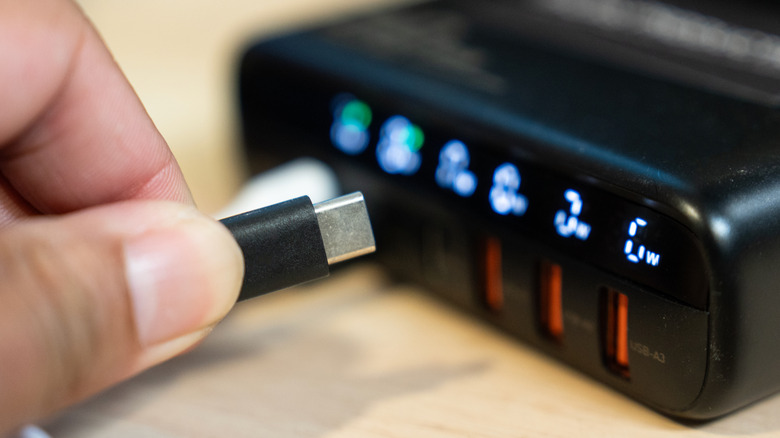What Is USB-C With PD & How Much Power Can It Deliver?
USB-C has become a prevalent part of most household tech since it was first released back in 2014. You can find it on all kinds of devices, from smartphones and laptops to gaming consoles like the Nintendo Switch 2, and even on a bunch of useful mini gadgets. Several governments have even passed laws to establish USB-C as the standard connection type, including mandates across the European Union, India, and California, in an effort to combat e-waste.
USB-C refers to a symmetrical, oval-shaped connector design used for ports and cables. Meanwhile, USB Power Delivery (also known as PD) is a charging protocol. It substantially speeds up the rate at which devices charge by transmitting high levels of power via USB. The amount of power it delivers shifts dynamically, meaning it adapts to fit a connected device's needs. So, USB-C with PD delivers power at multiple different power levels via a USB-C connector.
The exact wattage delivered will vary based on what supply you're using, the needs of your device, and which generation of USB-PD you're using. USB-PD 3.1, the most recent generation of USB-PD, can technically max out at 240W. However, a lot of the devices you charge won't need that much power, meaning it will deliver a lower wattage courtesy of its dynamic configuration.
How does USB-C with PD 3.1 compare to other connections?
USB-PD 3.1 is much more powerful than older generations and other types of USB. Earlier types of USB have much lower maximum power levels, ranging from as low as 2.5W up to 15W. In addition to its dynamic and increased wattage, USB-PD can also supply voltage at several different levels: 5V, 9V, 15V, or 20V. Other, earlier USB standards were only designed to deliver 5V. Similarly, it has a higher maximum amperage than previous USB generations, including USB-C 1.2, with a maximum current of 5A.
Some older or non-compliant USB-C connections might work differently from their newer counterparts. USB-C with PD 2.0 and 3.0 both max out at 100W, which is a substantial step down from USB-PD 3.1's 240W capabilities. However, for the USB-PD 3.1 to reach its full potential, it needs to be connected to a supply that can deliver a high enough wattage. Similarly, supplies with multiple ports can output less power from each port due to the fact that it's still limited to a total of 240W.

